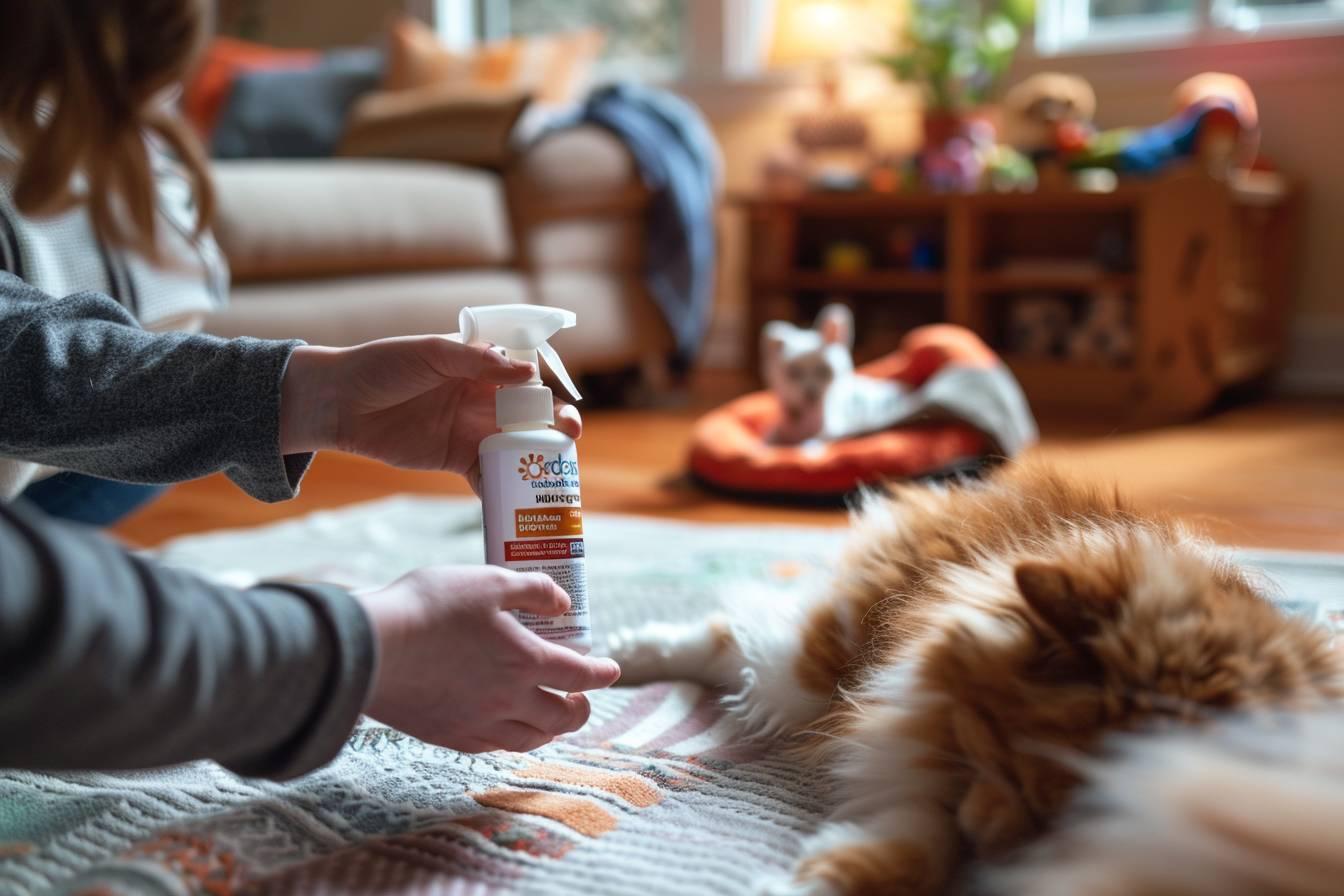Hardwood floor fleas, also known as parquet fleas, can be a persistent nuisance for homeowners. These tiny insects thrive in the cracks and crevices of wooden flooring, causing discomfort and potential health risks. This article will explore effective strategies to eliminate and prevent hardwood floor flea infestations, ensuring a clean and comfortable living environment.
Understanding hardwood floor fleas
Hardwood floor fleas, scientifically known as Tunga penetrans, are not actually fleas but rather a type of parasitic insect. These microscopic pests burrow into wooden floors, creating an ideal habitat for reproduction. Unlike common fleas found on pets, parquet fleas specifically target wooden surfaces.
The life cycle of hardwood floor fleas consists of four stages : egg, larva, pupa, and adult. Female fleas lay eggs in the cracks of wooden floors, which hatch into larvae within 3-4 days. The larvae feed on organic debris and develop into pupae after about two weeks. Finally, adult fleas emerge, ready to infest new areas of the floor.
Identifying a hardwood floor flea infestation can be challenging due to their small size. However, some telltale signs include :
- Tiny dark spots on the floor surface
- Unexplained itching or discomfort when walking barefoot
- Small, raised bumps on the skin after contact with infested areas
- Visible movement of small insects when closely inspecting floor cracks
Understanding the behavior and life cycle of these pests is crucial for implementing effective treatment and prevention methods. By recognizing the signs early, homeowners can take prompt action to address the issue before it escalates.
Effective treatment methods for hardwood floor fleas
Eliminating hardwood floor fleas requires a multi-faceted approach. Here are several proven methods to eradicate these persistent pests from your wooden flooring :
1. Thorough cleaning and vacuuming : Begin by thoroughly cleaning the affected areas. Use a powerful vacuum cleaner with a HEPA filter to remove adult fleas, eggs, and larvae from floor cracks and crevices. Pay special attention to corners, baseboards, and areas under furniture.
2. Steam cleaning : Employing a steam cleaner can be highly effective in killing fleas at all life stages. The high temperature of the steam penetrates deep into wood fibers, eliminating insects hiding in microscopic crevices. Ensure the steam cleaner is suitable for use on hardwood floors to avoid damage.
3. Diatomaceous earth application : Sprinkle food-grade diatomaceous earth along baseboards and in floor cracks. This natural substance dehydrates and kills fleas by damaging their exoskeletons. Leave the powder in place for at least 48 hours before vacuuming thoroughly.
4. Chemical treatments : In severe cases, professional-grade insecticides may be necessary. Choose products specifically formulated for hardwood floors and follow manufacturer instructions carefully. Common active ingredients include pyrethrins, pyrethroids, and insect growth regulators (IGRs).
When using chemical treatments, it’s essential to consider safety precautions :
| Precaution | Importance |
|---|---|
| Ventilation | Open windows and use fans to ensure proper air circulation |
| Protective gear | Wear gloves, masks, and eye protection during application |
| Pet and child safety | Keep pets and children away from treated areas until completely dry |
| Follow instructions | Adhere strictly to product guidelines for optimal results and safety |
Remember to repeat treatments at regular intervals to break the flea life cycle effectively. Most experts recommend following up with a second treatment 7-10 days after the initial application to target newly hatched fleas.

Preventive measures to keep hardwood floors flea-free
Once you’ve successfully eliminated a hardwood floor flea infestation, it’s crucial to implement preventive measures to avoid future problems. Here are some expert-recommended strategies to maintain a flea-free environment :
1. Regular maintenance : Establish a routine cleaning schedule for your hardwood floors. Vacuum at least twice a week, paying special attention to corners and baseboards. Use a microfiber mop with a small amount of wood-safe cleaner to remove dirt and debris that could attract fleas.
2. Seal cracks and crevices : Inspect your floors regularly for any gaps or cracks that could serve as entry points for fleas. Use wood filler or caulk to seal these openings, depriving fleas of potential hiding spots and breeding grounds.
3. Control humidity levels : Fleas thrive in humid environments. Use a dehumidifier to maintain optimal indoor humidity levels between 30-50%. This not only discourages flea infestations but also protects your hardwood floors from moisture damage.
4. Natural repellents : Consider using natural flea repellents as a preventive measure. Some effective options include :
- Cedar oil spray
- Lemon-scented cleaning products
- Rosemary or eucalyptus essential oils (diluted and used sparingly)
5. Pet protection : If you have pets, ensure they are treated regularly with veterinarian-approved flea prevention products. This reduces the risk of fleas being introduced to your home and eventually infesting your hardwood floors.
6. Professional inspections : Schedule annual inspections with a pest control professional to identify and address any potential flea issues before they become full-blown infestations. These experts can provide valuable insights and tailored prevention strategies for your specific home environment.
By implementing these preventive measures, homeowners can significantly reduce the risk of future hardwood floor flea infestations. Consistency is key in maintaining a flea-free living space and preserving the beauty and integrity of your wooden flooring.
Long-term strategies for flea-resistant hardwood floors
To ensure lasting protection against hardwood floor fleas, consider implementing these long-term strategies :
1. Proper floor sealing : Apply a high-quality sealant to your hardwood floors every few years. This creates a barrier that makes it harder for fleas to penetrate the wood and establish colonies. Consult with a flooring professional to choose the best sealant for your specific wood type.
2. Indoor climate control : Maintain a consistent indoor temperature and humidity level. Fleas prefer warm, humid environments, so keeping your home cool and dry can discourage their presence. Consider installing a smart thermostat to regulate temperature and humidity automatically.
3. Regular professional treatments : Schedule periodic professional pest control treatments, even if you don’t currently have a flea problem. These preventive measures can catch potential infestations early and provide an additional layer of protection for your hardwood floors.
4. Landscaping considerations : Pay attention to your outdoor environment as well. Keep your lawn well-maintained and avoid overwatering, as damp soil can attract fleas. Consider using nematodes, microscopic worms that feed on flea larvae, as a natural outdoor pest control method.
By combining these long-term strategies with regular maintenance and vigilance, homeowners can create an environment that is inhospitable to hardwood floor fleas. This proactive approach not only protects your flooring investment but also ensures a comfortable and healthy living space for you and your family.

